May-2015
The Castaways and Pirates of Learning
The coastal Amazon still preserves some of its traits on the beach of Oiteiros, on the western shores of Maranhão, through its flora and the abundance of species in its banks and pools, as well as through the habits of its people, in the slow time that spreads lazily over the hot hours. It also preserves itself in the calm daily work of the cofo, or straw basket, makers, the artisanal fishermen weaving nets, the babaçu nut breakers, the naval carpenters, and the manioc flour factories. Speech here is soft and sing-songy, full of diminutives. A way of talking that makes children, nicknames and things even smaller. The caboclo’s (a person of mixed Indigenous and European ancestry) speech turns “even smaller” into “even tinier;” it turns an ox cart that is full, crammed, heaving with manioc into one that “a lil’ full”; a river at the height of rainy season is “a lil’ full,” with lots of water; even everything, potentially all there is, when used to describe what you have, is “a little of everything.” And so it is that almost anything that is big becomes fondly small, with a sense of tameness, of something good and intimate, something closer to you.
Things pertaining to children, especially when spoken about by the eldest, are invariably treated in the semantics of the diminutive. It’s like this with children almost everywhere but, in Maranhão, a land of many blacks and people descended from maroon slave communities, the tonality of speech still comes from old slave women, the mothers not only of their children but also of their white master’s children. They speak with the sinuous sonority of the Creole dialects of Angola, Mozambique, Zaire and Guinea, of the Bantu mythology. A speech that became specialized, familiarized, became intimate with the timbres of the letters “m” and “n,” filled with maternal sap, from the sea, the mother, the mangrove and Nanã, the goddess of the rain. A speech that sidles humbly to what is hollow, that fills voids, full of sap, full of water.
Of course, these people of diminutives like to sing to the moon, to party under the dim light of the stars, to tune their instruments at night by the flames of a bonfire. These parties are the people’s opera, rooted in the drama of birth and death, like the Bumba Meu Boi festivities. But these parties are filled with a communal sensuality, led by women dancing to the sound of a trinity of long, phallic drums, often supported between the legs of its male players, like in the Tambor de Crioula. Or they are filled with a promiscuous throng, bodies united in circles, greased with sweat, squeezed against each other like in the Cacuriá. Like the Tambor de Mina songs, one of them in which the King Dom Sebastião is held in his palace under the sands of an island, and on moonlit nights the enchanted king saint emerges in the form of a bull over the sand dunes.
Not all of these parties take place in Oiteiros, neither are all these ceremonies from there, but they permeate the timbre and tone of the ideas of the older people of that region. They are heirs to a time that ties their grandparents to an even more mythical period in the state of Maranhão. Things you don’t notice easily in the way they talk, nor do you capture them like a hunting trophy or an exotic bird. But they are timidly lodged in the silent gratitude of a good day of fishing, in the joy of celebrating the month of Saint John, in the beat of the drum in the Mina grounds.
Life still moves calmly in this place, but not free from evils, much less immune to ruptures. All you have to do is pass by the school gate to notice in the architecture the brutal lines that divide community life, its nature, the fishermen and their knowledge, the naval carpentry and its masters, the many artisans and their active awareness of the local economy, from an educational project that is alienating, with a crass logic, built of rooms and walls too narrow and with its back to the sea.
The children of Oiteiros speak naturally about school when we talk to them, between sailing games, about the subjects they like the most and the “coolest” teachers. They reveal to us what they have been unlearning, the cultural precariousness in which we are stuck. One of them describes the current subject of the “practical art lessons:” drawing traffic lights. Another, after an entire morning of play carving bow and stern, mast and keel in the correct proportions for his little boat, says he doesn’t learn anything in math class, he can’t understand what it’s for. A third one, the skinniest and most interested in perfecting his ship, says he likes geography, but they haven’t studied anything in the classroom about the exuberant region of this unique place – the Amazonian coast – and of the world in which they live.
School over there, real life here. Real life, in mass education, in educational stastitics, only exists in the future. Learning abstractions in order to be in the future.
But play, the place in which to live for real, that can’t wait. The school for the soul, the workshops of creation, engineering bridges that connect our knowledge, those don’t wait and happen every day in backyards, on boats anchored on the beach, in the real lives of children. Play is a real fact, one that pleases children since it makes knowledge palpable, has significance, takes its meaning from real life, applies vision and all its subjectivities to the pulse of the community, the arteries of work, touching and sharing with everyone. Play is like a silent serum, dripping invisibly, flowing within, teaching intravenously the ways of learning the world’s nourishments.
One excellent example, experience, an anchorage of self-instruction for children – essential to this reflection – can be found in Oiteiros.
Forty years ago, a young sailor dreamt of crossing the sea from Portugal. A Portuguese man dreaming of crossing the sea is nothing new. It runs along with the fearlessness and desire of seeing possible misadventures as unforgettable adventures. Senhor Manoel, escaping the Salazar dictatorship at the end of the sixties, built a small boat and slid clandestinely, on a starry night, into the bay of Cascais towards the Brazilian coast. After a series of events, including a shipwreck, he stayed here. In his exile, he docked in Oiteiros and lives here to this day. On the edge of the mangrove, he built his little shipyard for catamarans and other types of sailboats, for at least the past two generations influencing this fishing coast in the state of Maranhão.
Senhor Manoel’s arrival brought to the lives of the fishermen at the very least a new type of boat, unknown in the region. But it also added a new dream to the lives of the children: to build these double-bowed ships, light and fast, intricate, with a bolder style of sailing. The boys and girls began to make their own catamarans out of the aftermath and leftovers of the shipyard. The owner never discouraged them from walking around, looking and learning with their eyes.
From that point, many children, now adults, turned the shipyard into their school when the other school, the one that claims to be the real one, didn’t get in the way. A few carpenters that learned with mister Manoel were once boys building catamarans. Today, in their spare time, they teach their sons how to better drive their sea ships.
Children are like that: used to circling around, latching onto the edges, teaching themselves with eyes stretched from afar, looking through telescopes when they’re not allowed to come close.
Children keep on like pirates, in spite of orders and reprimands, learning through theft, force, desire. Some focus on details, others on the general picture. Some know more about knots, others are better at carving. Each one grabs what they can from the spillover of the adults’ work. They keep on studying the body of the boat, understanding its anatomy and the purpose of each piece, the consequences of each function. They synthesize everything. Everything must work.
It’s different from drawing traffic lights in art class, forcing onto children a crass notion of citizenship in a small town that doesn’t even have traffic lights. Instead, what is urgent is to learn about the reality of the wind, which has an active energy, becomes real when it is time to sail; those who live in distant abstractions can’t succeed; they act, use force, capsize the boat, break the mast, don’t let it flow, can’t conquer.
Children are like that: they want the truth of the world. Their impulses are not alienating, their play-acting is a duty; its activity is real, even if imagined. That is why they are dedicated to experiences and practical questions. Even when they want to know if the moon isn’t lonely and cold. Because there is a real interest in that. They are practical about the reality of the other, even if the other is so different.
This is how the children learn in their shipyard school, working and absorbing in 360º what happens in the job of play. They may not know by memory the names of every part of a boat, or the names of every type of boat in the region, but they recognize from a distance the lines on the edge of the sea that distinguish a catamaran from a biana, a curiaca from a bote. They know from hearsay the difference in handling, the power capacity, the weight, the difference between a boat made of fiber glass or wood. They know the weight of the adze, of the importance of a vise in pressing the hulls.
The boat games are almost like a musical instrument workshop. The constructions need symmetry so they can be tuned later. A crooked guitar is difficult, almost impossible to tune. A tiny boat with a mast beyond its proportions won’t handle the weight of the sails. A loose rudder won’t balance precisely. A light or short bolina won’t serve as ballast to steady the boat on the sea.
Once something is made, then you learn its effects. You may run into an overly strong wind at the end of a morning of building. As good as the effort was at building correctly, there will always be a need to tune, tune, and tune the boat so it hits the center of the whole objective: to slip lightly on the water. To build little boats is to imagine oneself cutting, carving, shaving the water. A boat building child has in their imagination’s bow a sharp hydrodynamic, capable of racing in the waters without being held back, with minimal friction, steering freely, dodging the sea’s moving weights.
In the obsession for tuning, the boys developed mobile axels. Using chumbadas – lead scraps from fisheries or old car parts – they created a type of ballast for the boat. A locked weight at the end of the bolina. The bolina is a type of central keel, a guide, which is attached to certain types of vessels. This lead weight, that only exists in the toy boats, acts as counterweight to the mast and helps keep the tiny ships from turning. For this there is a whole foundry process. Using fire, embers, tins and lead, they melt the metal and pour the liquid into a mold – an oval hole, shaped like a hull to cut the waters – dug into the ground. While the lead is still hot, they stick the tip of the wooden bolina into its center. After waiting for it to dry, the axel is ready.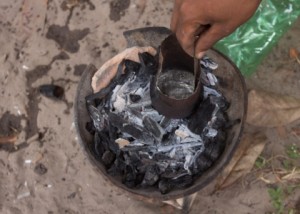
Beyond the foundry work, the game is rich in chemical knowledge in the work of coating the wood for better durability and accentuating its shape.
The more dedicated ones search the benches of the shipyard for leftover resin from the work of the carpenters. Resin that is still soft is good for coating the special buoyant wood (from a light root) that is used for the hulls. That is, they coat their catamarans in fiber. It gains more speed, becomes slicker, more durable, shinier. The artisan boy grows proud of his art. It’s a natural status, elected by others, recognized by all, specially the younger ones, as the crew’s teacher. This is the school!
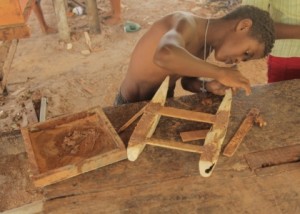
Well, Senhor Manoel is no teacher, has no interest in the games of the boys, is not interested in listening to dreams. But just from bringing and training caulkers, carpenters, turners for his shipyard, from listening to boat masters, from trying to facilitate the lives of artisanal fishermen, he created an open school. The children circulate there and collect obliquely, though hearing, looking, and learning, almost invisibly, the live knowledge transmitted through speech and motion. A space for oral and physical access to knowledge. As informal as possible, it couldn’t be more palpable.
This Portuguese man, Manoel, proved without any pretensions that the community is a school; that the school should consider itself a community. He didn’t turn his shipyard into a learning institute, but granted freedom for the children to see, visit, learn.
Children are just like that: they live through looking, dreaming about the foundations and structures of material life. If there’s an opening, a breach in the work of an adult, they enter quickly, take what they want, and leave happily, owners of tiny trophies in their repurposing workshops. Pirates of naps during the adult’s work.
Senhor Manoel is not prone to taking in children, nor is he sensitive to their interests. He doesn’t spend his day showing everything, teaching, saying that this or that is good and fun to make. Senhor Manoel just leaves them and doesn’t mind their presence, and lets the children “figure it out.” He admits his wife complains about the lost money from tools that are lost or broken, and he defends them, saying “the loss is small next to what they are gaining.” He understands their desire, he lived and was raised with it, he does what he wishes had been done with him.
The children get a “nasty look” for grabbing what they shouldn’t. They don’t intrude when they’re not called. If they do intrude, they know they can be subject to a scolding that is not always gentle. That is why they follow keenly, attentively, agilely, eager for the right moment. They don’t hold back in their actions and much less in their desires.
Believe it, children are like that: they dream better through conquered materials. They learn more profoundly through struggle, through accomplished practice. They dream with more focus through the substance of work, of human labor. They live like the poet, through the plasticity, inversion and subversion of material life. Drummond, a worker of words, knew how to make a flower grow out of concrete.
Children are like that: they like to learn with those who travel. Always something new. Doesn’t really matter to what place. As long as they depart and arrive. And, after arriving, returning. Learn and start over, learn again and start over something new. Learning by doing, finding outcomes, making noises and echoes, conceiving, building, free to undo and unsay.
Learning must be free like Quintana dreamt, always fleeing from the eternal “same place.” I leave you with the poet – poets always say more with much less – in his Preparativos de Viagem (Preparations for Travel), proposing to you, with this, a metaphor for school life:
A louca agitação das vésperas de partida!
Com a algazarra das crianças atrapalhando tudo
E a gente esquecendo o que devia trazer
Trazendo coisas que deviam ficar
Mas é que as coisas também querem partir,
As coisas também querem chegar
A qualquer parte! – desde que não seja
Este eterno mesmo lugar…
E em vão o Pai procura assumir o comando:
Mas acabou-se a autoridade…
Só existe no mundo essa grande novidade: VIAJAR!
The mad agitation on the eve of departure!
With the clatter of children hampering everything
And us forgetting what we should bring
Bringing things that should have stayed
But which are things that also want to leave,
The things also want to arrive
To any place! – as long as it is not
This eternal same place…
And in vain the Father tries to assume command:
But his authority is finished…
There only exists in the world this great new thing: TRAVEL!
Text: Gandhy Piorski (for other texts by him, click here)
Photos: Renata Meirelles
. 0



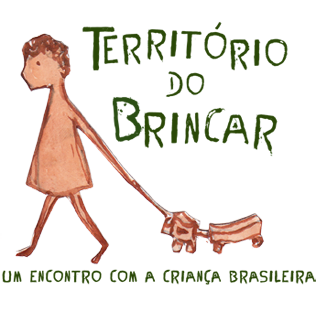
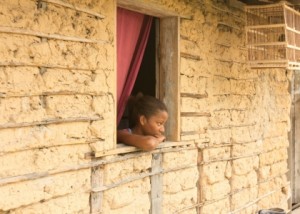
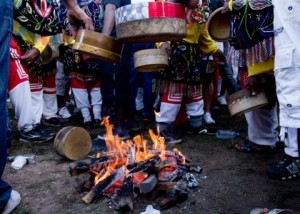
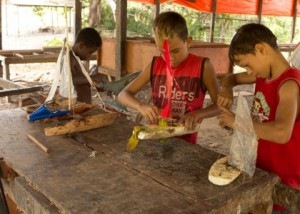
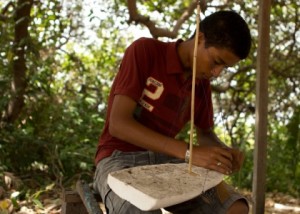
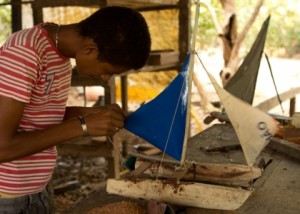
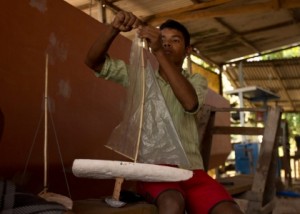
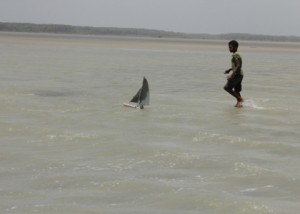


Leave a Reply